Research Highlights

Quantum Information and Manybody Physics
Quantum information science is an emerging frontier that has generated a great deal of interests and stimulated novel potential applications. Its aim is to understand how certain fundamental laws of quantum physics can be harnessed to dramatically improve the storage, processing and transmission of information. On the other hand, quantum manybody systems give rise to exotic collective states of matter, such as superfluids, superconductors, and insulating quantum liquids, which have no classical counterparts. Significant progress has been made in our understanding toward the collective behavior of quantum manybody systems via both analytical and numerical approaches.
Analytical approaches can often provide qualitative guidance. Unbiased numerical simulations play a crucial role in verifying the underlying assumptions. However, there are important classes of problems, such as fermionic systems, frustrated spin systems, and non-equilibrium quantum systems, which are still impossible to obtain solutions via direct simulation.
In recent years, interplay between concepts from quantum information theory, and novel numerical methods have improved our understanding of the reason behind the difficulties of these classes of problems, and various new ideas from the quantum information theory provide potential breakthroughs to overcome these challenges.
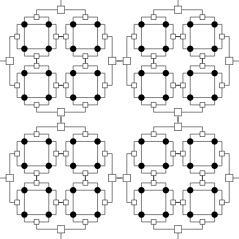
Furthor information
-
•L. Wang, YJK, A.W. Sandvik, Plaquette Renormalization Scheme for Tensor Network States, arXiv:0901.0214
-
•Chen Liu, Ling Wang, Anders W. Sandvik, Yu-Cheng Su, Ying-Jer Kao, Symmetry breaking and criticality in tensor-product states, arXiv:1002.1657
Geometrical Frustrated Magnets
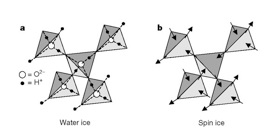
Furthor information
-
•Y. Z. Chou, YJK, Quantum Order by Disorder in a Semi-classical Spin Ice, arXiv:1005.4742
-
•L. J. Chang, Y. Su, Y. -J. Kao, Y. Z. Chou, R. Mittal, H. Schneider, Th. Brueckel, G. Balakrishan, M. R. Lees, Magnetic correlations in spin ice Ho2-xYxTi2O7 as revealed by neutron polarization analysis, arXiv:1003.4616
Simulation of exotic phases and phase transitions in quantum lattice models
In 2004, Kim and Chan reported signatures of superfluidity in solid 4He in torsional oscillator experiments,where a drop in the resonant period, observed at around T ~0.2 K, suggested the existence of a nonclassical rotational inertia in the crystal. Following the discovery by Kim and Chan, many experiments and theories have attempted to explain this fascinating observation; the situation remains, however, controversial.
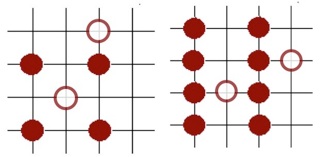

Further information:
-
•Yu-Chun Chen, Roger G. Melko, Stefan Wessel, Ying-Jer Kao, Supersolidity from defect-condensation in the extended boson Hubbard model, Phys. Rev. B 77, 014524 (2008)
Development of Efficient Algorithm

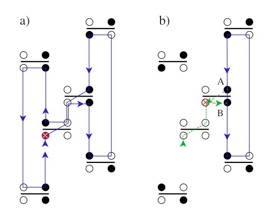
Further information
-
•Ying-Jer Kao, Roger G. Melko, A short-loop algorithm for quantum Monte Carlo simulations, Phys. Rev. E 77, 036708 (2008)
Disordered Systems
Impurities are known to be an effective tool to locally perturb quantum systems, thereby revealing important information about their microscopic interactions and correlations.
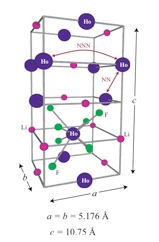
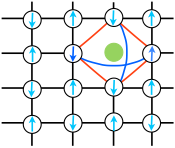
Further information
-
•S.M.A. Tabei, M.J.P. Gingras, Y.-J. Kao, P. Stasiak, J.-Y. Fortin ,Induced Random Fields in the LiHoxY1-xF4 Quantum Ising Magnet in a Transverse Magnetic Field, Phys. Rev. Lett. 97, 237203 (2006)
-
•S.M.A Tabei, M.J.P. Gingras, Y.-J. Kao, T. Yavors'kii, Perturbative Quantum Monte Carlo Study of LiHoF4 in a Transverse Magnetic Field, Phys. Rev. B 78, 184408 (2008)
-
•Cheng-Wei Liu, Shiu Liu, Ying-Jer Kao, A. L. Chernyshev, Anders W. Sandvik , Impurity-induced frustration in correlated oxides, Phys. Rev. Lett. 102, 167201 (2009)
High Performance Computing Using GPU
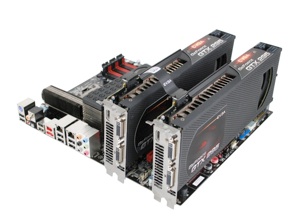
CPU clusters. GPU computing is a new front for scientific computation. We are designing programs for simulations in strongly correlated systems.



